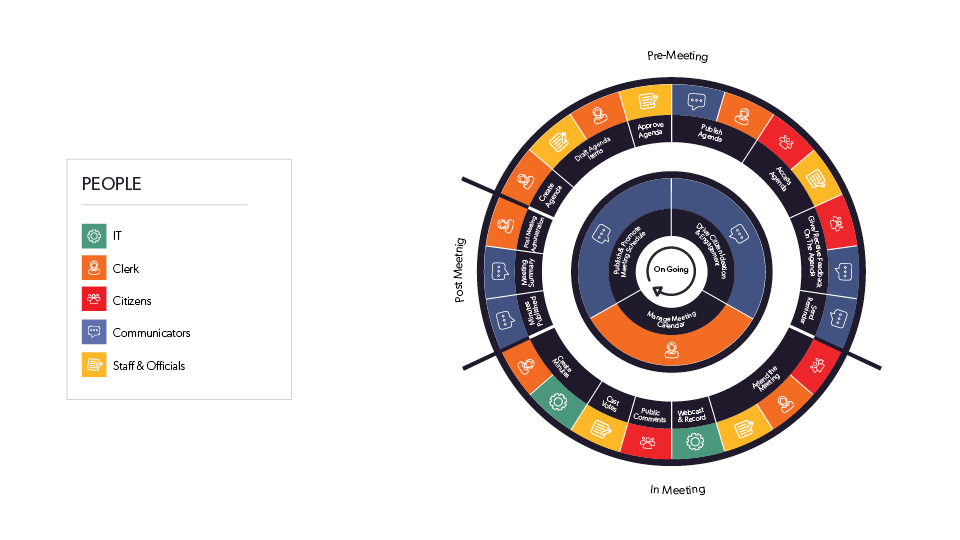
Throughout state and local jurisdictions, citizens are becoming increasingly interested in the legislative process. The public wants to know what is happening in government and be able to give their input on issues they care about. This means that government organizations need an easy way to connect – and when it comes to creating agendas, gathering meeting minutes and disseminating information to constituents, the process can sometimes overshadow the results.
In order to drive a more engaging legislative experience, public-sector organizations must move away from siloed legislative and communications flows towards more integrated processes. Helm explained, “The Integrated public Meeting Wheel integrates modern meetings in four main ways: internal functional integration, digital and live integration, message integration and a user-friendly product.”
The Public Meeting Process Wheel

The Integrated Public Meeting Wheel outlines the four phases of public meetings and how you can deliver the best services to your citizens during each phase.
Phase One: Ongoing Activity.
“These are the things going on in your locality that you need to be working on all the time,” Helm explained. “Reliable and regular communication is the heartbeat of a transparent public meeting process and it puts the public in the meeting.”
During this step you should be focused on publishing and promoting meeting schedules, driving citizen ideation and engagement and managing your meeting calendar. It is critical to create user-friendly products and to stress open, two-way communication.
Phase Two: Pre-Meeting.
Good preparation requires integration among all key stakeholders including internal people, council and board members and citizens. “Automation, pre-built campaigns and digital document management eases the burden on clerks and communication staff and allows all pre-meeting tasks to get done effectively and efficiently,” Helm said.
These tasks include creating, approving and publish the agenda, giving and receiving feedback from citizens and sending out reminders to the public. “You have to get everyone on board,” Helm explained. “It can’t be one team working independently of the others or you lose the rich data and cooperation that makes the meeting better and drives engagement.”
Phase Three: In Meeting.
Well prepared meetings can be executed seamlessly with the right tools to capture minutes and votes and manage streaming and archiving video. “Technology can take the heavy lifting in the meeting and give citizens a voice both digitally and in person,” Helm said.
The key things you’ll have to do during the meeting is attend, webcast and record it, allow for public comments and vote casting, and create minutes. Most of these tasks can be done with the help of technology and automation.
Phase Four: Post Meeting.
After the meeting takes place you have the responsibility of providing transparent, usable documentation of minutes, indexed videos and voting records. Helm explained, “If it is not discoverable by a normal citizen it is not promoting transparency and it is not valuable.”
In this step, you should focus on publishing and promoting meeting minutes, videos and summaries. Additionally, communicate next steps to your constituents with limited lag time in between the meeting and your emails.
If you missed the Virtual Summit, visit the Granicus website to download the on demand webinars. If you have any questions, or want to reach out to discuss your content strategy, email info@granicus.com.